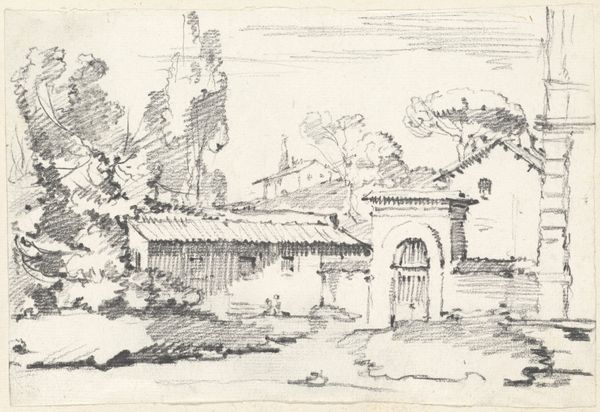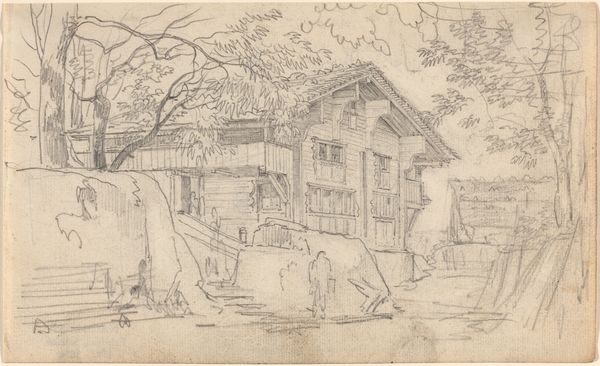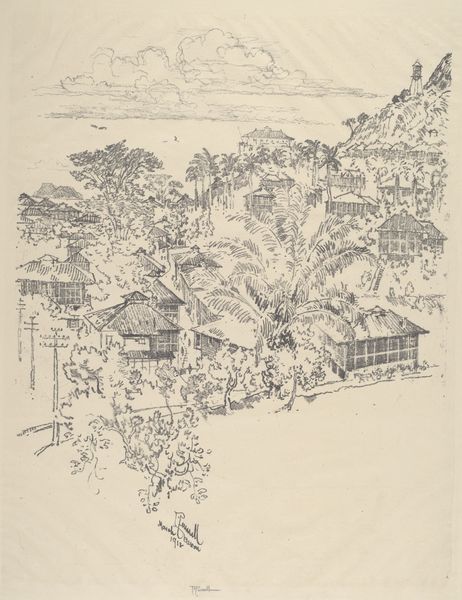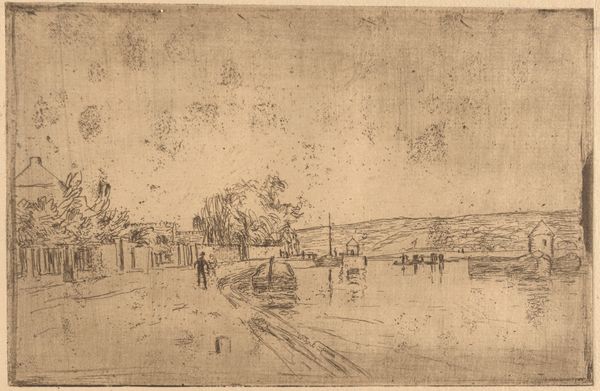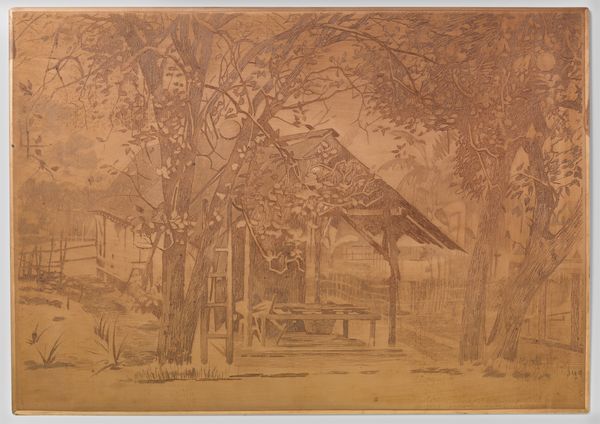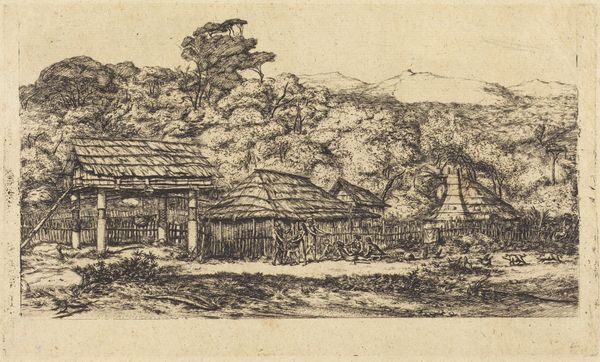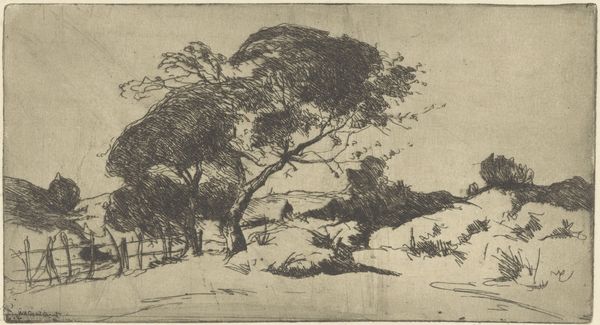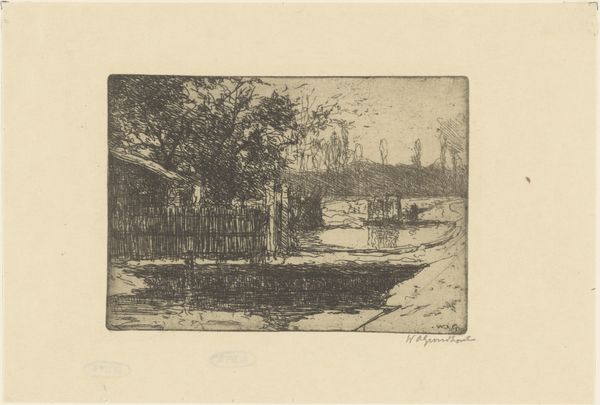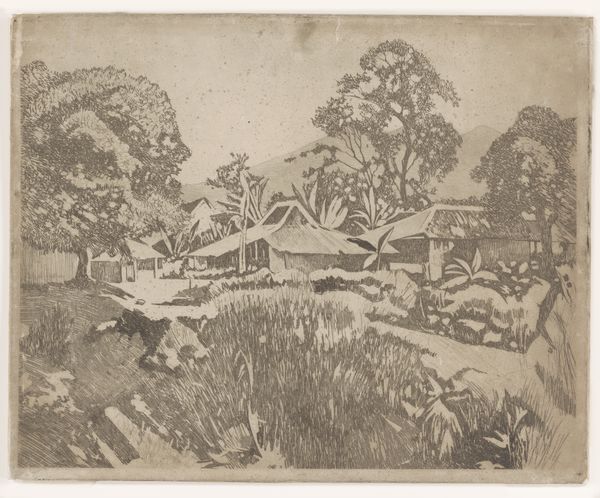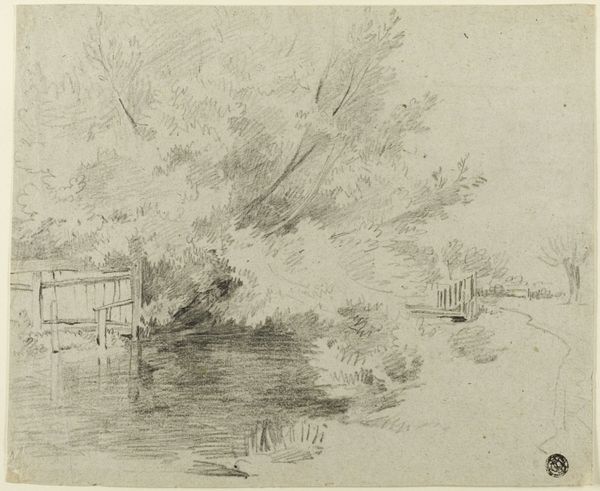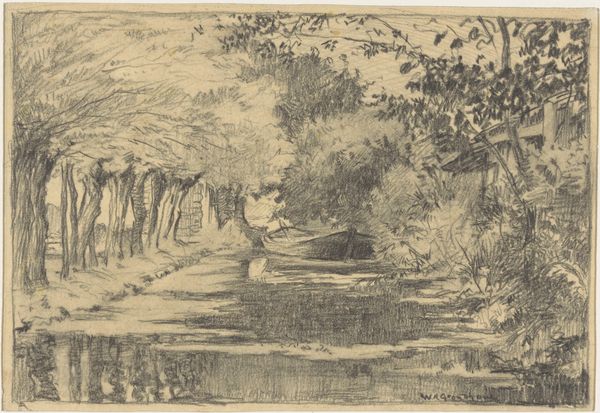
print, etching
#
ink drawing
# print
#
etching
#
landscape
#
genre-painting
#
modernism
Dimensions: height 218 mm, width 286 mm
Copyright: Rijks Museum: Open Domain
Curator: Let’s turn our attention now to Willem Adrianus Grondhout's etching, "Moestuin in Voorburg," created in 1915 and currently held at the Rijksmuseum. Editor: At first glance, I'm struck by its almost melancholic quality. The monochromatic palette, the intricate web of etched lines – it conveys a sense of quiet labor and a closeness to the earth. Curator: That feeling is carefully constructed. Grondhout created this during the first World War when Dutch neutrality allowed artistic freedom but social realities pushed artists to portray everyday scenes reflecting simple virtues. Editor: Indeed. You can see the tangible engagement with the materials. It’s fascinating how the printmaking process itself reinforces this theme of labor; the physical act of etching the plate mirrors the toil depicted within the garden. Curator: Absolutely. The print medium allows it to reach a broad audience, disseminating the image and ideals of the working class to a greater part of the population. Think about the context: prints like these provided a window into everyday life beyond elite circles. Editor: It’s not just documentation, though. There’s a selective process at work. Notice the textural richness in the rendering of the soil, the subtle play of light filtering through the trees—Grondhout highlights not just the work but also elevates its importance and connection to nature. It really merges high and low art practices. Curator: He certainly offers a sympathetic view of labor through an almost impressionistic style which makes it far more intimate than traditional portrayals of labor in grand-scale paintings commissioned for the elite. Editor: Thinking about this being 1915 and the world undergoing such transformation, makes me realize how Grondhout used the act of artistic production itself as a way to root the process in the everyday, a sort of social anchor for those in need during chaotic periods. Curator: Exactly! Considering Grondhout and his contemporaries at the time allows for the art work to provide key historical understandings through which one may think about modern-day realities. Editor: It’s made me appreciate how much information is imbued in seemingly simple imagery! It all ties together wonderfully.
Comments
No comments
Be the first to comment and join the conversation on the ultimate creative platform.


